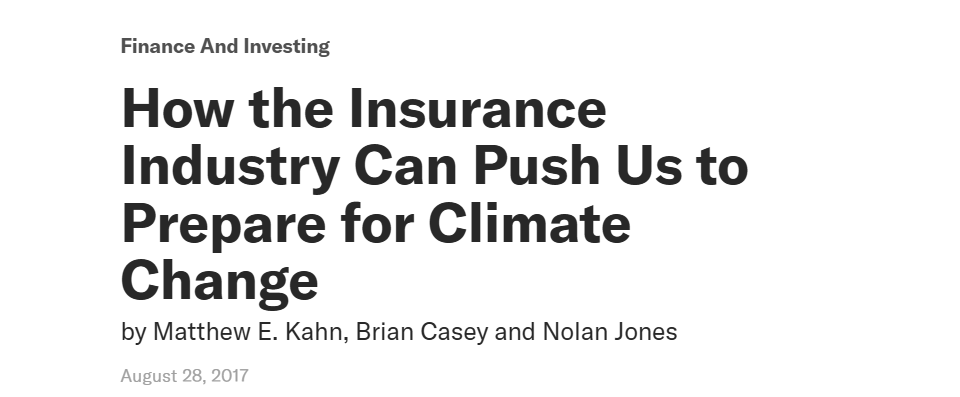The Los Angeles Fires as a Natural and a Regulatory Disaster
Why did the January 2025 Los Angeles Fires cause so much damage to my City? If we can learn the lessons from this shock, then we are less likely to repeat these mistakes in the future. Since my explanation for the disaster has several “puzzle pieces”, I will first introduce each one and then I will discuss the ugly synergistic impacts of them together.
The California Coastal Zone Boundary —- Most of the Pacific Palisades is inside the California Coastal Zone Boundary. This means that any redevelopment of homes in the area faces extra regulatory scrutiny. This acts as a disincentive to update housing. The average home in the Palisades was built in 1966! This is old housing that doesn’t feature modern technology.
Here is our 2010 paper.
California’s Proposition 13 —- This famous ballot initiative freezes incumbent property owner’s property taxes at artificially low rates. This creates an incentive for them to not sell their properties and for the owner to age in place. So, the Palisades features older homes with older owner due to #1 and #2.
The California Fair Plan —- This insurer of last resort is subsidized by the state. In recent years as for profit insurers have stopped offering policies to home owners in risky places, many of these individuals have turned to the Fair Plan. I will return to this point below.
California’s for profit insurance markets are highly regulated such that the state’s Insurance Commission must sign off on rate hikes and in the recent past this agency has limited rate hikes to not exceed 7% per year. This price ceiling has caused insurers to retreat and this has nudged more property owners to rely on the subsidized Fair Plan.
Much of Los Angeles Area (77%) is zoned for single family residences. This binding constraint means that taller buildings are not allowed to be built in areas deemed to be relatively safer.
Water prices are set by the LADWP. This non-profit has not introduced widespread dynamic pricing. The market approach to allocating scarce water has not been introduced. If the region faces greater fire risk and if Machine Learning/AI can identify these areas, then there is a crisis benefit of having surplus capacity of water in the right places to fight fires when these shocks materialize. This is literally a “rainy day fund” but focused on having water inventories ready to fight low probability (but increasingly likely) disasters.
In retrospect, it is clear that too little brush and fire prone vegetation was cleared in areas facing fire risk. Did the California Endangered Species Act discourage investment in brush clearance out of fear of hurting creatures? What lawsuits have been filed to block such investments?
Here is a recent story from 2023 from San Diego
8. Fire Departments are non-profits and we do not know much about how their leadership chooses how much labor and capital to devote to different tasks such as reducing the risk of extreme wildfires and fighting such fires. Did environmental regulations reduce Southern California Fire Department investments in pruning vegetation that could be wildfire fuel? The tradeoff here is protecting ecological habitats versus reducing wildfire risk. Who makes this decision? How much extra wildfire risk has Southern California faced because of the success of environmental lawsuits in protecting habitats?
____________________________________________________________________________
I now turn to sketching out the ugly synergistic effects of these various regulatory issues that together contribute to disaster.
The combination of the State placing a price ceiling on for profit insurance rates and the existence of the California Fair Plan creates an adverse selection effect as the riskiest properties turn to the Fair Plan for insurance. This has at least two economic effects. First, it means that the rest of the State of California (including property owners in safe places, and renters around the state) are subsidizing those who choose to take a risk. Also, since the Fair Plan is not a for profit —- it faces weak incentives to encourage property owners in risky places to take costly self-precautions that would reduce wildfire risk.
In this substack column, I present my “rules of the game” for unleashing for profit insurers to be the Adult in the Room encouraging adaptation to risk.
I also recommend my 2017 Harvard Business Review piece.
The ugly synergy between the California Coastal Commission Zone and Prop 13 is that older people are living in older homes in an increasingly risky place. This means that they are not updating their homes to be ready for the new realities we face. If professional management companies owned such land, they would have the data, expertise and capital to finance resilience and to work with the authorities to provide local public goods that together would lower fire risk.
To wrap up, the Los Angeles Fires have caused immense damage. I claim that the amount of damage would have been much lower if the 7 issues sketched above had been addressed. I have sketched out the microeconomic approach to thinking through the ugly regulatory synergies that together contribute to creating the “Kindle” so that a wildfire once lit —- spreads and causes great damage. How will my region perform next time?
The answer hinges on whether we change the “rules of the game” in response to this shock. Will there be a significant silver lining as this shock will cause regulatory reform?






